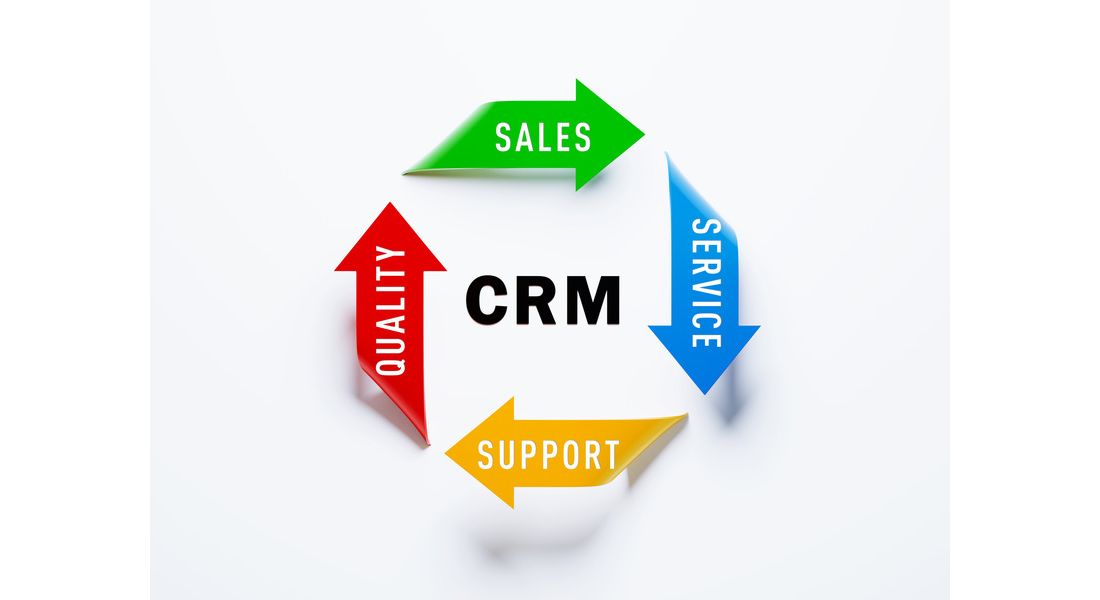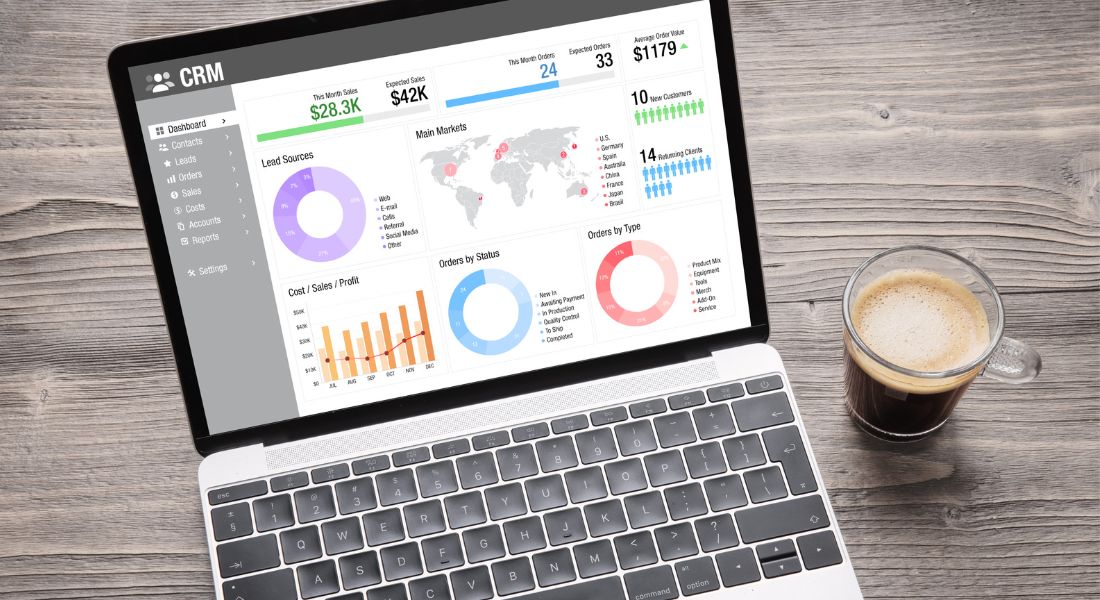Your CRM database is like a powerful yet mysterious genie – sure, it looks great sitting there in its data warehouse, but it won’t do you any good until you’ve learned how to truly unlock its capabilities. You see, your CRM system is just a repository of data, facts, and figures. It’s like a bank of answers, but without the crucial questions you need in order to make the connections. That’s where advanced analysis comes into play.
Advanced analysis gives you the power to turn that pool of raw data into meaningful insight – the kind of insight that can help you drive targeted marketing, increase sales, and improve customer relationship and retention. But the benefits extend far beyond those three – with advanced analysis, you can harness the power of your CRM data in a variety of ways to make smarter, more strategic decisions and create initiatives that are more profitable and impactful.
In this blog post, we’ll discuss exactly how advanced analysis can help you unlock the power of your CRM database, as well as how to set yourself up for success when utilising such a powerful tool. Let’s dive right in!
Quick Definition
A CRM database analysis involves collecting and analysing customer data in order to identify trends and patterns, as well as generate customer insights. Utilising the gathered data can then help companies create more effective customer strategies.
Post Contents
ToggleWhat is Customer Relationship Management Database Analysis?
Customer Relationship Management (CRM) Database Analysis is the process of using data collected and stored in a CRM database to analyse customer behaviour and to make better informed business decisions. This type of analysis helps businesses take a deeper look into their customers’ preferences, behaviours, demographics, and more. By leveraging this data, companies can improve marketing and sales strategies, increase customer satisfaction and engagement, and reduce operational costs—all of which lead to an overall boost in revenue, not to mention giving a welcome boost to the sales team!
Proponents of CRM Database Analysis argue that understanding customers’ behaviour patterns can allow for more effective targeting of potential buyers and improved customer relations. By better understanding how customers think and behave, companies are better equipped to provide tailored services that link directly with the needs of their target audiences. In addition, CRM Database Analysis can be used to identify opportunities for expansion or growth, as well as areas where investments should be made or cut back in order to maximise profits.
Critics of CRM Database Analysis point out that when not done properly, such data analysis could lead to misinterpreted results or inaccurate assumptions. Improper analysis techniques can yield misleading conclusions, leading companies down the wrong path and missing out on valuable insight. Thoughtful use of statistical software tools is essential when applying this type of analysis so that proper control measures are in place to prevent flaws from skewing the outcome.
At the end of the day, many agree that if handled with care, advanced analysis techniques have tremendous potential to unlock important insights stored within one’s CRM database. Successfully harnessing this power will help organisations stay ahead of the competition by learning more about their customers’ needs and preferences in a timely manner. With that said…What information is stored in a CRM Database? That will be explored further in the next section.
- A study conducted in 2016 found that 73% of companies reported improved customer segmentation through the implementation of database analysis in their CRM systems.
- A 2018 survey showed that 93% of companies reported a rise in profits after leveraging data analysis and marketing automation technologies.
- According to recent research, businesses that use database-driven analytical technologies within their CRM systems can expect to see a 300% increase in customer engagement.
What information is stored in the CRM Database?
The key to unlocking the full power of your CRM database is understanding what information is stored in it. Most CRM databases are comprehensive and store a wide range of data points, depending on the type and nature of your customer interactions. They typically capture data relating to customers’ buying habits, contact details, demographics, loyalty status, browsing histories and more, as well as sales-based information such as lead generation, order placement and billing history. The CRM also usually tracks customer service inquiries and resolutions. All this data can be critical in helping businesses get insight into their customers’ behaviours and needs.
There has been some debate over whether or not CRM databases should store personal data such as Social Security numbers or bank account numbers. On one side of the argument are those who believe that storing confidential information may result in security risks if the system is compromised – for example if someone were to hack into the system and expose customer data, it could lead to identity theft or other financial losses for customers. On the other side of the argument are those who feel that restricting usage to only certain pieces of personal information can actually limit a business’s ability to gain insights from its customer base.
By unlocking the power of your CRM database with advanced analysis, businesses can gain valuable insights into their customer base and uncover trends that inform strategic decisions. In the next section we will discuss some of the key benefits that come with leveraging these insights through advanced analysis techniques.

Benefits of CRM Database Analysis
Using a customer relationship management (CRM) system within an organisation has become an increasingly popular way to manage customer data. The ability to analyse the data within a CRM database, however, can be both a valuable asset and source of frustration for organisations. The power and insights of CRM database analysis can help companies drive more sales, increase customer satisfaction and improve operational efficiency.
One significant benefit of CRM database analysis is increased efficiency due to improved access to customer data. Having valuable customer information organised in one database makes it much easier for organisations to target particular customers with relevant marketing campaigns. Additionally, having streamlined data tracking enables companies to be more efficient when responding to customer requests, which can ultimately lead to better customer service. Furthermore, automated analysis can pull information from multiple sources quickly, allowing for real-time reporting and further streamlining the evaluation process.
There are, however, some potential drawbacks to the use of CRM database analysis. A reliance on technology and automation could lead to a lack of human interaction when dealing with customers, which can lead to negative feelings towards the company. Additionally, there is a risk that user-generated false information or errors will be fed into the database and unknowingly used by decision makers that rely on automated reports generated from the said database. Such problems would need to be monitored and every effort made to track them and take action to find a solution.
To sum up, while there are risks involved in using CRM database analysis, it offers many potential benefits for organisations willing to take advantage of it. From greater organisation and efficiency in managing customer data, to improved targeting and response times for customer requests – these are all ways that businesses can leverage the power of their CRM databases. Finally, gaining comprehensive insights into customer behaviour is necessary for businesses seeking to maximise their return on investment from their CRM databases. With this in mind let’s discuss how businesses can obtain comprehensive customer insights in the next section.
Obtaining Comprehensive Customer Insights
Obtaining comprehensive customer insights from a CRM database requires a thorough and focused approach. Analysing the data collected from customer records, interactions and communications can be complex, time-consuming and even costly. However, it is critical to derive useful customer intelligence from the data in order to transform your CRM into an effective tool for engaging customers and driving sales.
One approach is to drill down through the data in a systematic way by studying each dimension of the customer profile. This would include capturing key demographic variables of clients such as age, sex, region, occupation, annual income and level of education. You would also need to analyse sentiment data gleaned from customer surveys or reviews to understand how customers view your business, product or service.
At the same time, it’s also important to look at behavioural information that includes customer purchase histories, feedback on products and services as well as engagement with external marketing materials such as emails and digital ads. This information can provide valuable insights into how customers interact with your business and can help inform your marketing strategy.
On the other hand, it can be argued that obtaining comprehensive customer insights involves more than simply analysing quantitative data from the CRM database. To truly gain meaningful insight into customer behaviour, businesses must go beyond looking at simple metrics such as purchase frequency or website visits. Instead, focusing on qualitative methodologies such as focus groups and interviews will give you an understanding of why customers act in certain ways – a perspective that can be invaluable for understanding their needs and wants better.
No matter which avenue you pursue for obtaining comprehensive customer insights from your CRM database, one thing is certain: the information gathered will be essential for launching new products and services successfully as well as renewing existing customer relationships. With the right analytics in place, your business will have a competitive advantage in today’s complex marketplace. As the next step in unlocking the power of your CRM database we must turn our attention to analysing this data so let’s shift our focus now to taking a detailed look at steps involved in analysing your CRM database.
Essential Points
To fully understand customer behaviour, businesses must go beyond quantitative data analysis of their CRM database and look at qualitative methodologies such as focus groups and interviews. Drilling down into demographic variables, sentiment data, purchase histories, and engagement with external marketing materials will provide valuable insights into customer interaction and inform strategic decisions. Obtaining comprehensive customer insights from the CRM database is critical for competing in today’s marketplace.

Steps in Analysing CRM Database
Analysing a CRM database is essential for understanding and engaging with customers. Companies should take the time to identify exactly what kind of insights they can gain in order to draw actionable conclusions from their data. To unlock the power of a CRM database, advanced analysis steps should be taken.
One of the primary steps to consider when analysing a CRM database is data pre-processing. This involves cleaning the data and ensuring data accuracy, both of which are important prerequisites for a successful analysis. It is also important to consider the scope of your analysis. It is much easier to analyse smaller databases or select portions of larger databases than attempting to go through every piece of data in one’s CRM repository.
It is also necessary to decide what type of analysis is best suited to draw insights from the data at hand. Advanced analytics techniques such as predictive modelling, natural language processing (NLP), and machine learning algorithms can be used to further explore customer behaviour more deeply. These sophisticated methods make it possible to accurately predict future customer outcomes from their past behaviour.
On the other hand, it may be argued that using simpler methods such as focus groups and surveys could yield more meaningful results, as these approaches focus more on understanding underlying motivations rather than on predicting outcomes. Ultimately, there’s no “one size fits all” approach; businesses should carefully evaluate what technique best meets their goals for understanding customer behaviour and producing meaningful insights from their CRM database analysis.
Once an appropriate analysis method has been chosen, companies can move forward with leveraging their data by segmenting customers into relevant categories according to various criteria such as age, region or purchase history. Segmentation enables businesses to gain valuable insights into different behaviour patterns among subsets of customers in specific segments, allowing them to tailor marketing strategies accordingly. This marks an important step in unlocking the full potential of a CRM database with advanced analysis techniques.
Getting Started with Segmentation is the next key step in maximising CRM database value; segmenting customers into distinct categories allows businesses to target each group individually and make accurate predictions regarding their future actions through advanced statistical models and machine learning algorithms. With detailed customer segmentation and thorough advanced analytics, companies can unlock the true potential of their CRM database and make better strategic decisions about how best to satisfy customer needs and drive profitable growth.
Getting Started with Segmentation
Segmentation is an essential part of harnessing the power of customer relationship management (CRM) data. Segmentation involves sorting and slicing customer data in order to better understand their behaviour, preferences, and relationships with a business. By dividing your customer base into custom-tailored segments, you can identify key opportunities for growth and improvement from the data residing within your CRM database.
But before diving into segmentation techniques or using specific tools and algorithms to do it, it’s important to have a well-defined plan. A strategy should be developed that clearly outlines the objectives of segmentation, such as target market identification or acquisition analysis. Additionally, decide on the types of segmentation criteria to use: demographic information, psychographic attributes, buying habits, etc. Think about how this could be applied downstream by areas like marketing or sales after segmentation has taken place.
There is some debate over whether manually defining segments in advance or automatically grouping them based on an algorithm is the most effective approach. Segments defined upfront will be more tightly focused than those generated through automated processes, which often suffer from low granularity. On the other hand, automated segmentation provides results faster and may be easier to scale up when dealing with large datasets. Ultimately, the choice depends on individual needs and includes taking the costs, time required for retraining models, and maintenance commitments into consideration.
Now that you have a basic understanding of what customer segmentation involves and some best practices to consider when getting started with it, it’s time to deploy the latest CRM data analysis tools for deeper insights.

Deploying the Latest CRM Data Analysis Tools
In today’s digital world, data is an incredibly valuable asset, and organisations that can effectively analyse and utilise it have a distinct competitive advantage. With the right CRM data analysis tool, businesses can glean valuable insights into customer profiles and behaviours, anticipate purchasing decisions, predict future trends, identify inefficiencies, and more. Thus, deploying the latest CRM data analysis technology can be critical for entrepreneurs and organisations looking to derive maximum value from their customer relationship management (CRM) database.
When considering the ideal CRM data analysis tool for organisational use, companies must weigh the costs and benefits of different options. On one hand, efforts to deploy newer technologies can be expensive upfront and require plenty of time and energy. On the other hand, however, the financial return of such investments is often quite large due to increased efficiency and productivity gains. Ultimately, each organisation must consider its own resources against the potential rewards associated with deploying the most innovative tools available on the market.
Another important factor to keep in mind is the employees’ familiarity with new technology. As deploying new systems demands additional training and adjustments on behalf of current staff members, investing in user-friendly solutions designed to maximise worker comfort should always be considered when selecting an optimal CRM data analysis platform. Additionally, entrepreneurs should look for platforms capable of integrating with existing business workflows seamlessly while providing powerful analytical applications that are easy to use in practice. Employing such tactics may help ensure successful adoption from workers in terms of ease-of-use and comfort levels.
Finally, organisations looking to capitalise on today’s top enterprise-level technologies should also aim for cloud-based solutions as they generally offer greater flexibility than local software installations with lower long-term operational costs. All things considered, careful research combined with consideration of economic resources available should prove beneficial when contemplating which CRM data analysis tool would suit an organisation’s needs best.
As discussed throughout this section about deploying the latest CRM data analysis tools, the power available through such advanced technologies is obvious; yet it cannot be fully realised until all potential pitfalls are avoided as well. Let us now take a closer look at some of the most common mistakes made when unleashing this resourceful technology within any enterprise environment in the following section: “Common Pitfalls of CRM Database Analysis”.
Common Pitfalls of CRM Database Analysis
When using advanced CRM database analysis, there are a few potential pitfalls that must be overcome to ensure the accuracy and reliability of the data produced.
First, it is important for businesses to approach CRM analysis with a realistic understanding of the limitations of their data. As with any form of data, there may be biases or inaccuracies in customer datasets which can impact the reliability of results if not addressed. To ensure reliable results, businesses should use data cleansing techniques to identify and filter out any irrelevant or inaccurate records before proceeding.
Second, businesses should take care when creating their analytical models to ensure they accurately reflect the customer behaviour they are trying to measure. Models should consider all relevant factors, such as customer demographics and behaviour, but also must be able to scale up and accommodate changes in customer behaviour over time. It is also important for businesses to anticipate any issues that may arise from incorrect model assumptions. This includes potential scenarios such as seasonal customer behaviour that is not taken into account by the model. If a model does not adequately capture forecast trends or customer preferences, the resulting insights are likely going to be unreliable and lead to potentially costly business decisions.
Finally, businesses need to ensure their technology infrastructure is strong enough to support advanced analytics operations. The size of the dataset and complexity of analyses being conducted will have an impact on the read/write speeds required for accurate results. If a business attempts to run advanced analytics operations without sufficient infrastructure capabilities, they risk experiencing poor speeds which could lead to delays in extracting insight from customer databases.
Ultimately, proper preparation prior to running advanced CRM analysis helps ensure more accurate and reliable results by accounting for prevalent biases and conflicts within user datasets as well as irregularities in customer behaviour that might not have been taken into consideration initially. By avoiding these common pitfalls, companies can confidently make better-informed decisions that help them unlock the full power of their CRM databases more effectively than ever before.
Conclusion: In order to prevent unreliable results from arising during advanced CRM database analysis operations, businesses must first recognise and understand the common pitfalls associated with such activities

Conclusion
The power of a CRM database can be unlocked when advanced analysis methods are applied. It is an essential tool for organisations looking to grow, optimise efficiency, and increase customer retention. It helps organisations establish an understanding of their customer base and develop strategies to meet their needs. Additionally, predictive analytics can be integrated with a CRM database to further optimise the insights gained from data analysis. By embracing the potential of advanced analysis methods, organisations can use their CRM database as a powerful tool for improving efficiency, gaining competitive edge, and expanding visibility within their market.
That said, advanced analytics come with a fair share of risks as well. This includes data privacy concerns that need to be dealt with accordingly. Companies must also ensure that their implementation of analytics technologies is secure enough to protect data from malicious actors and unauthorised access. Furthermore, advanced analytics comes with a hefty price tag; it requires considerable investments in training personnel and acquiring specialised software or services. As such, there may not be any direct or immediate ROI when first launching these initiatives, though the long-term gains may certainly outweigh the initial costs.
In conclusion, the power of a CRM database can be leveraged significantly with the help of advanced analysis techniques. Organisations should carefully consider all aspects of this technology before they commit to it fully and make sure they have enough resources available to maintain it. By ensuring that proper protocols are put in place and investing adequately in personnel and infrastructure, companies can turn their CRM database into a powerful tool for growth and success.
Responses to Frequently Asked Questions
What types of information can be gathered through a CRM database analysis?
A comprehensive CRM database analysis can uncover a wealth of useful information. By leveraging powerful analytics tools, you can gain valuable insights into customer behaviour and trends. For example, analysing customer data stored in a CRM database can provide you with knowledge of who your customers are and how they interact with your business. This includes understanding their buying habits and preferences, interactions across channels, product usage, and more. Moreover, it can reveal opportunities for up-selling or cross-selling different products and services. Additionally, analysing customer feedback in the form of surveys or comments left on social media posts can provide invaluable data to inform the direction of your marketing strategy. All of this information helps to better understand customer needs and tailor your services to meet their expectations.
How can a CRM database analysis help my business?
A CRM database analysis can offer your business a range of insights that can help to drive measurable results. By analysing customer journey data, you can gain actionable intelligence about how your customers interact with your product or service. These insights can help inform decisions around marketing campaigns, product development as well as assigning resources effectively and efficiently. Additionally, a CRM database analysis can provide an understanding of customer preferences and potential opportunities for cross-sell and up-sell. It also helps in better uncovering customer segmentation allowing for more personalization and tailored experiences for customers that result in improved satisfaction and longer term loyalty. Finally, it can help identify predicative patterns which allows for optimisation of investments in areas most likely to produce the best returns. All of these outcomes have the potential to increase revenues, reduce costs and improve overall customer experience.
What are some of the best practices for conducting a CRM database analysis?
The best practises for conducting a CRM database analysis can include the following:
- Define Your Goals: Before beginning any analysis, it is essential to have a clear understanding of what outcomes you’d like to achieve from the results. Having well-defined goals allows you to tailor a strategy to meet those objectives and drive meaningful insights from the data.
- Identify Relevant Data Sets: To accurately answer your questions, you need timely, accurate, and relevant data sets. Carefully examine your business needs and decide which ones should be included in the analysis. Ensure all data sets are complete, reliable and up-to-date.
- Establish Quality Control Standards: Quality control protocols should also be established prior to conducting an analysis. Data accuracy is paramount in any analytical process, so it is important that quality assurance measures are in place, such as spot checks or document reviews, before proceeding with the analysis itself.
- Choose Appropriate Data Visualisation Techniques: Choosing the right data visualisation techniques depends on the type of data being analysed and the questions being posed by stakeholders. There are many types of visualisations available such as tables, maps and charts, each with their own strengths and weaknesses for different analyses. It is important to identify the appropriate type depending on your goals and desired outcome.
- Leverage Existing Analytical Tools: Analysing large amounts of data can be time consuming and challenging when done manually; leveraging existing tools can help streamline tasks so that more energy can then be put towards interpreting results. Examples include SQL language that allows users to query databases quickly and efficiently, or statistical programmes such as SAS or SPSS for running more sophisticated analytics on datasets.
By following these best practices when conducting a CRM database analysis ensures that you gain maximum value out of the process as you work towards solutions to your questions efficiently and effectively.





